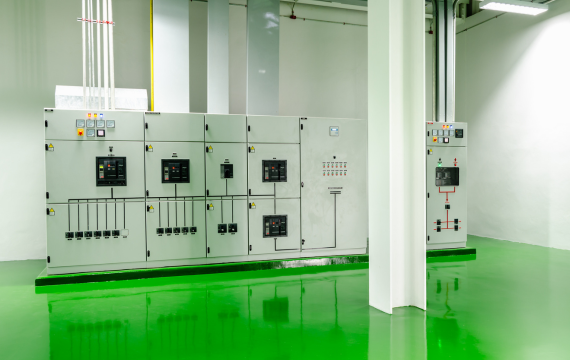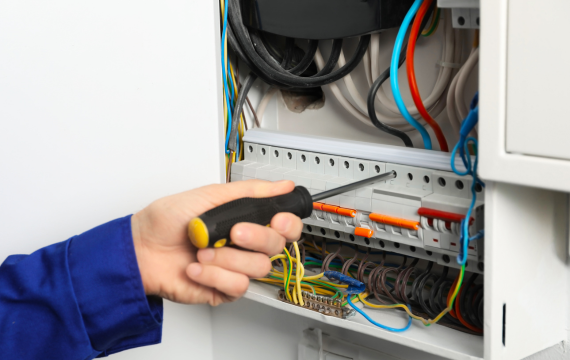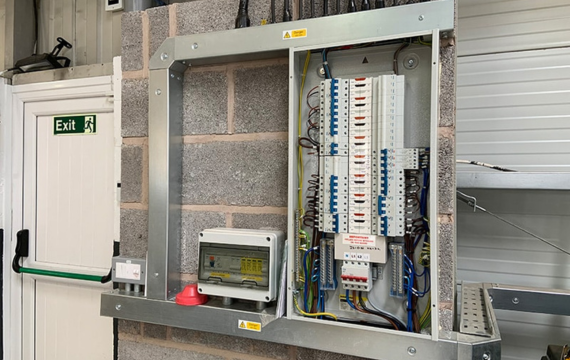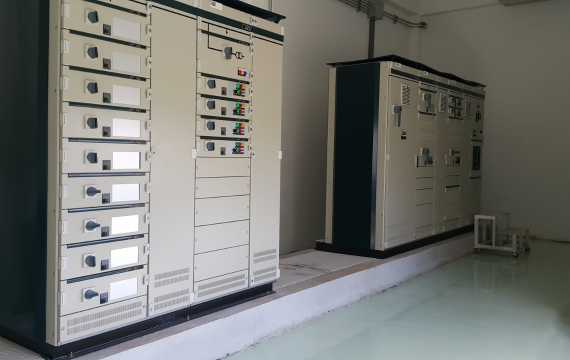Distribution boards are used to transmit power from a main supply to auxiliary circuits. Main distribution boards (MDBs) are used to distribute power to sub-circuits; sub-distribution boards (SDBs) are used to further distribute power within particular areas; and final distribution boards (FDBs) are used to supply power to individual appliances or devices. All types fulfill a distinct purpose in the effective/safe management and distribution of electrical power.
Understanding the Types of Primary Distribution Boards

Power distribution is often started at the Main Distribution Board (MDB) in an electrical system. Large buildings, industrial complexes, and factories are areas where MDBs are commonly encountered. An MDB’s constituent parts include:
- The main switch – Utilized for overall distribution board control.
- Incoming cables – The supply of power.
- Busbars – Power distribution wires inside the distribution board.
- Circuit breakers – Employed to prevent overloading and short-circuiting of the system.
- Neutral links – Wires utilized inside the distribution board to link neutral wires.
- Earth links – Conductors that shield the distribution board’s metal casing from fault currents and electric shock, safeguarding the system and its users.

Several Final Distribution Boards (FDBs) receive power from the MDB through the Sub-Distribution Board (SDB). Buildings with several floors or wings frequently use SMDBs. An SDB’s constituent parts consist of:
- The main switch – Utilized for overall distribution board control.
- Incoming cables – The MDB is a power source.
- Busbars – Power distribution wires inside the distribution board.
- Circuit breakers – Employed to prevent overloading and short-circuiting of the system.
- Neutral links – Conductors that the distribution board uses to link neutral wires.
- Earth links – Conductors that shield the distribution board’s metal casing from fault currents and electric shock, safeguarding the system and its users.

The Final Distribution Board (FDB) in an electrical system denotes the final stage of power distribution. It provides electricity to several appliances, including plugs, fans, and lights. An FDB’s constituent parts consist of:
- Circuit breakers – They guard against overloading and short-circuiting the system.
- Outgoing cables – Send electricity to the devices it provides via the FDB.
- Neutral links – Conductors inside the distribution board that link neutral wires.
- Earth links – Conductors that shield users and the system from fault currents and electric shock by connecting the distribution board’s metal enclosure to the ground.

Electric motor operation is regulated by the Motor Control Center (MCC), which functions as a distribution board of sorts. It consists of a single panel with motor starters, variable frequency drives (VFDs), and feeder breakers. The components of an MCC are as follows:
- Motor starters – Utilized to turn on and off electric motors.
- Feeder breakers – Utilized to prevent overloading and short-circuiting of the system.
- VFDs – Employed to regulate electric motor speed.
- Busbars – Conductors that the MCC uses to distribute power.
- Incoming and outgoing cables – The transmission cables and source of power.



